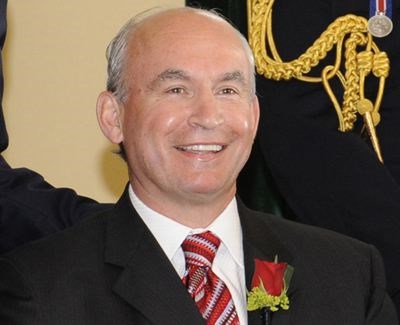Despite the recent downturn in commodity prices that has meant thinner bottom lines for many mining companies, the three-day Minerals North conference in Vanderhoof was upbeat and optimistic.
"As a province we shipped more ore this year, despite the lower prices, so that is interesting," said Minister of Energy and Mines Bill Bennett during the event. He said other signs of atypical behavior of the usual commodity cycles included the number of small companies servicing the mine sector that did not close up shop, as is usual when the prices dip, and the investment money still flowing to junior mining companies.
There have been hard years recently for junior companies - the exploration firms with small staffs or only one prospector - to source investment funds, but Bennett saw indications of improvements during a period usually without much fundraising luck.
He said the provincial government is at a pivotal time in its relationship with the mining industry. Other industries, like petroleum and forestry, have to pay fees for the actual extraction of those resources, on top of corporate taxation. Mining only paid the taxation part for most of its activities. That had to change, in the eyes of the provincial treasury board. He was now tasked with creating a fee formula that made mines pay in, but not create an impediment to mining work that would actually lose the province more money in the long run.
Bennett said charging the junior mining companies any sort of fees for their drilling and prospecting work was nonsensical. He knew that "would throw a wet blanket on the enthusiasm for exploration" when it is commonly understood that their poking around in the rocks and trees is what turns curious geologists and dedicated hobby-panners into Mount Milligan and Blackwater megaprojects.
Bennett said he put the question to the medium and major companies. How do you see the issue of fee payments? The response, he said, may be surprising to some: OK, we understand, we don't mind paying, but we want something in return.
What mining companies wanted in return was better service from the provincial government. They wanted faster processing of the paperwork, and a streamlined system for submitting reports and all the forms they have to fill out. That, said Bennett, was a response that would only benefit everyone involved, and that is the task his ministry personnel is now engaged in.
Bennett also suggested the improvements in the mining sector, even through the cyclical downturns, was related to improving relationships with the First Nations of the province. He referred to the comments of another guest at the Minerals North conference, Osoyoos Indian Band chief and development corporation CEO Clarence Louie. Part of Louie's message was "everywhere you are in Canada, you are on someone's traditional territory" and the rights to that territory were either set out in treaties mining companies had to follow, or without a treaty meaning it belonged outright to the First Nations of that spot.
"He is right about respecting the rights First Nations have to the land," said Bennett. "It is a hell of a lot easier [for the provincial government and local communities] to embrace a mining company when they embrace that understanding."
Taseko Mines Ltd. is one of northern B.C.'s most active companies, with First Nations impasses holding up their hopes for the New Prosperity project in the west Cariboo but an affectionate relationship with First Nations over their active Gibraltar Mine project in the east Cariboo and a burgeoning relationship with the Tsay Keh Dene north of Mackenzie over their Aley Niobium Project.
According to Taseko's manager of community and aboriginal affairs Christy Smith, the company has brought the community's elders to the proposed site to show them the geographical plans, and set up a dialogue process so elders and other Tsay Keh members with knowledge of the site's flora and fauna can express what those environmental values are to help mitigate the effects of mining.
The company was also actively recruiting employees from the Tsay Keh Dene population and cognizant that teaching the skills needed for mine work require leaving the community, they built a training centre right at the village.
"We are happy to say our first training courses will begin in the next couple of months," said Smith. "We want the region to grow with us as we develop the mine site. That takes two-way communication."



